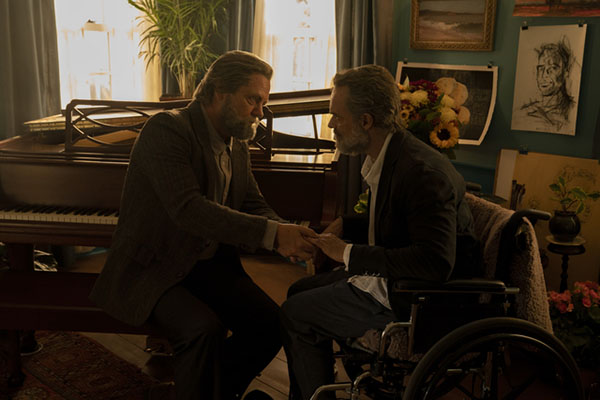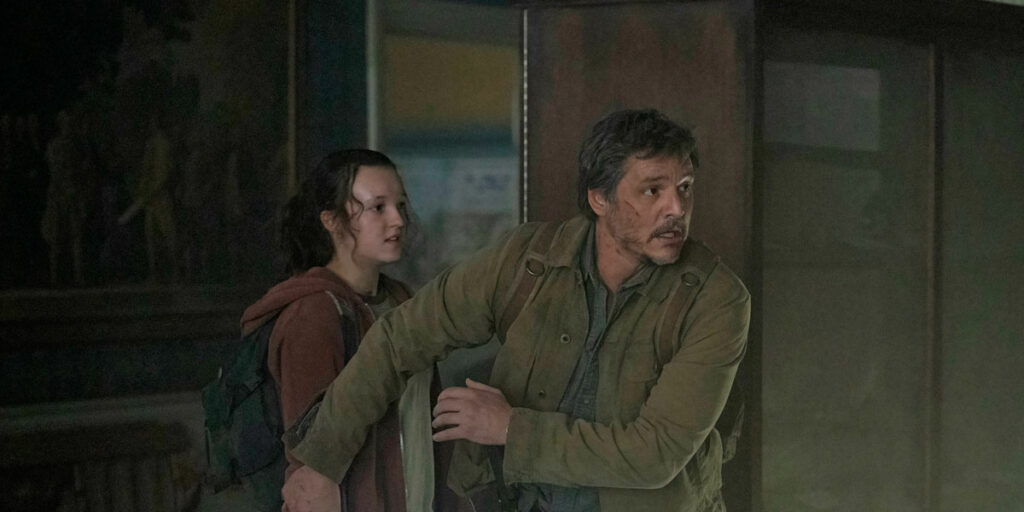HBO’s The Last of Us suffers from some pacing hiccups but comes out on the other side as the first great video game adaptation.
Video game adaptations have been nearly impossible for the film and television industries to get right. Whether it’s Super Mario or Silent Hill, there’s been an uphill battle to get an adaptation of the video games we love that are of the same quality. Whether it’s through a fundamental lack of understanding of the source material or a general lack of effort, it’s been easy to dismiss many of these adaptations as soon as they enter production. However, the tide seems to finally be changing as HBO’s The Last of Us is both the first truly great video game adaptation and a beautifully constructed piece of television.
The Last of Us takes place 20 years after a global pandemic that destroys civilization as we know it. Joel Miller (Pedro Pascal), a hardened survivor, is tasked with a mission to take a 14-year-old named Ellie (Bella Ramsey) across the US. Across the way, the duo discovers truths about themselves, the paths they travel, and the dangers both known and unknown.
The key component of The Last of Us as a video game was the intensity it could create through gameplay while telling a thoughtful and cinematic story. Naturally, going from Playstation to HBO will mean that changes will be made. For the most part, the core story and themes of The Last of Us are followed extremely closely. However, the series begins to differ when it establishes how it reaches those points. At first, these changes can be small. An intense sequence of a car escaping a city is executed beat for beat from the game but in the series, the various violent sights of mayhem we see are flipped on opposite sides. A burning barn is on the left in the game while in the series, it’s on the right. Of course, the series goes much further with this with one crucial episode early on in its nine-episode run.

Episode 3 tells the story of Bill (Nick Offerman) and Frank (Murray Bartlett). A pair of survivors that fall in love amid devastating world destruction. In the original game, the story of their relationship is mostly left to our imagination but because we have the advantage of a brand-new medium in the form of television, we’re able to delve even further into their characters and narrative. Without a doubt, this is easily the highlight of The Last of Us’ entire first season run. It may not be game-changing in the show’s overall narrative but it serves as a stunning example of how to expand and perhaps even improve upon what you’re already adapting. The story of Bill and Frank is given a beautiful spotlight and serves as a remarkable showcase of why The Last of Us is such a profoundly human series.
As dark and violent as The Last of Us can be both as a video game and a television series, it would be easy to forget just how heartfelt it can be. A core component here is the relationship that slowly builds between both Joel and Ellie. Joel is a hardened survivor whose cold exterior strikes fear into many who cross him. Ellie, on the other hand, is a curious teenager whose ignorance and unknowing recklessness appear unusual in the harsh world where both characters reside.
Pedro Pascal and Bella Ramsey portray these contrasting personalities beautifully, with the latter truly stealing the show in every scene she’s in. From the outset, Ramsey makes Ellie her own as every single scene becomes instantly mesmerizing thanks to her multi-layered performance. Her jokes, attitude, and reveal of her anxieties as a teenager trying to escape from the world’s loneliness are expertly crafted by both Bella Ramsey and the show’s excellent writing.
While the show consistently maintains a certain level of quality, there’s a somewhat underlying feeling around the middle that it may be moving a little too quickly to the finish line. The relationship between Joel and Ellie, as beautiful as it is throughout, can’t help but feel a little lost at times in the midst of how much the show wants to individually spotlight. Episode 6, because of this, feels incredibly refreshing because of how much time it devotes to both characters. That’s not to say that Joel and Ellie remain underdeveloped by the end but more so that it would’ve been nice to spend a little more time with them that wasn’t always about moving the overall narrative of the series along.
Despite some pacing hiccups and some weak visual effects at times, The Last of Us is still an absolute masterclass in television. It’s a refreshingly episodic tale that’s as harsh and violent as it is human and heartfelt. Video game adaptations have been an uphill battle for multiple decades, but, with The Last of Us, we have an example of how exceptional an adaptation can be when made with the heart and quality required.
The Last of Us is now available to watch on HBO Max in the US and on Sky Atlantic and NOW in the UK and Europe. Read our reviews of video game adaptations Borderlands, Fallout, Sonic the Hedgehog 2, and Knuckles.

